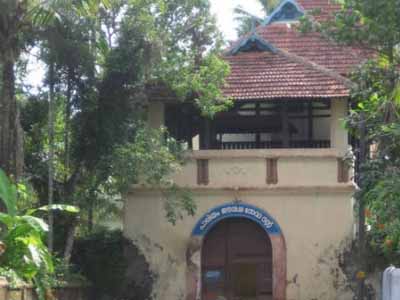Paliam Dutch Palace

Information on Paliam Dutch Palace (Ernakulam, Kerala) - History & Architecture
Paliam Dutch Palace is located in Kochi, Kerala. It was during the rule of the Maharajas of the State of Kochi that this palace was built. The palace was used as a residence by the Rajas of the Paliath Achans family. Over the years the palace is maintained by the Paliam Trust.
Paliam Dutch Palace Architecture
The Paliam Palace was used by the royal ministers of Kochi over the years. It is a two storey monument with a ground floor. It reflects the picture of both the Dutch and local infrastructure of Kerela. The minimum ornamentation within the fort add maximum beauty to the palace. The interior of the building has staircase made mainly of teakwood. The walls inside the building is quite thick which has expanded openings in it. The inside part of the palace has a circulation area which is considered as a private section of the structure. This particular design of the palace enable proper flow of air all over the place as it insulates the entire building from the outside area. This further result in a cooler interior irrespective of the condition of the outside weather of the place. The Achans family were used to address the people of the kingdom using the Prasanga Podium which is located in the top entrance of the palace.
Paliam Dutch Palace History
The Paliath Achans was the chief minister of the then maharaja who was ruling Kochi. During the period of 1600s the maharaja was dealing with issues of security threat owing to the presence of the Portuguese intruders. It was during this period that the raja was accompanied by the Paliath Achans upto Chendamangalam. After this incident, the Paliath Achans stayed under wraps for quite a long in a place near to Kalari. This further led to the establishment of Paliam Kovilakom palace in the 16th century. This approach of Paliath Achans impressed the Dutch rulers so much that they redesigned the Paliam Dutch Palace and gifted it to the Raja. Notably, during the ancient times i.e. 16th - 17th century women were restricted to enter the palace. However, the elder female were allowed to enter the monument. The building was extended by the elder family member during the year 1786 enable its use for the women of the family and the children. The big enclosure inside the palace has rooms where the family members used to gather together for dine and chat for hours. The entire used one kitchen within the palace to cook and eat at a common dining place together. There are general rooms within the fort that were used for the guests by the royal family. The entire family believed in community living. After the death of the last family member, the building was evacuated and took over by the ASI.
Paliam Dutch Palace Tourism Importance
The number of tourist that attend the palace throughout the year is quite large in number especially owing to its ancient artefacts and the fusion of Dutch and local architecture. The weather within the palace is deemed to be quite suitable for the tourists especially the foreign visitors who are believed to be reluctant towards extreme weather condition. Furthermore, the portraits and art inside the monument is expected to catch the attention of the visitors and ensure their repeat visit. Furthermore, easy and convenient reach to the palace through roadways is another vital factor that can influence tourists to visit the palace.
- Andaman Nicobar Monuments
- Andhra Pradesh Monuments
- Assam Monuments
- Bihar Monuments
- Chhattisgarh Monuments
- New Delhi Monuments
- Goa Monuments
- Gujarat Monuments
- Haryana Monuments
- Himachal Pradesh Monuments
- Jammu and Kashmir Monuments
- Karnataka Monuments
- Kerala Monuments
- Madhya Pradesh Monuments
- Maharashtra Monuments
- Odisha Monuments
- Punjab Monuments
- Rajasthan Monuments
- Tamil Nadu Monuments
- Telangana Monuments
- Uttar Pradesh Monuments
- West Bengal Monuments